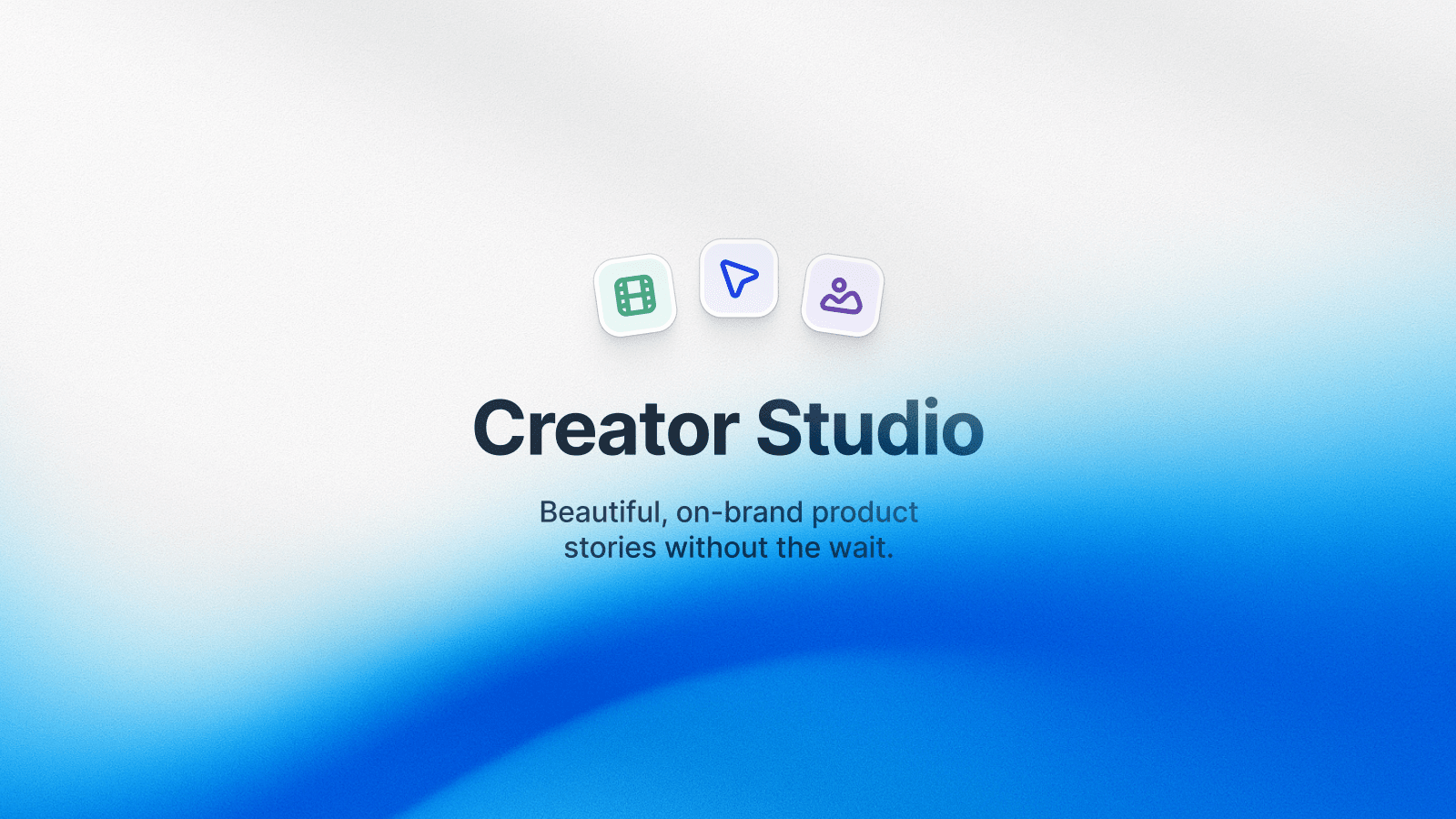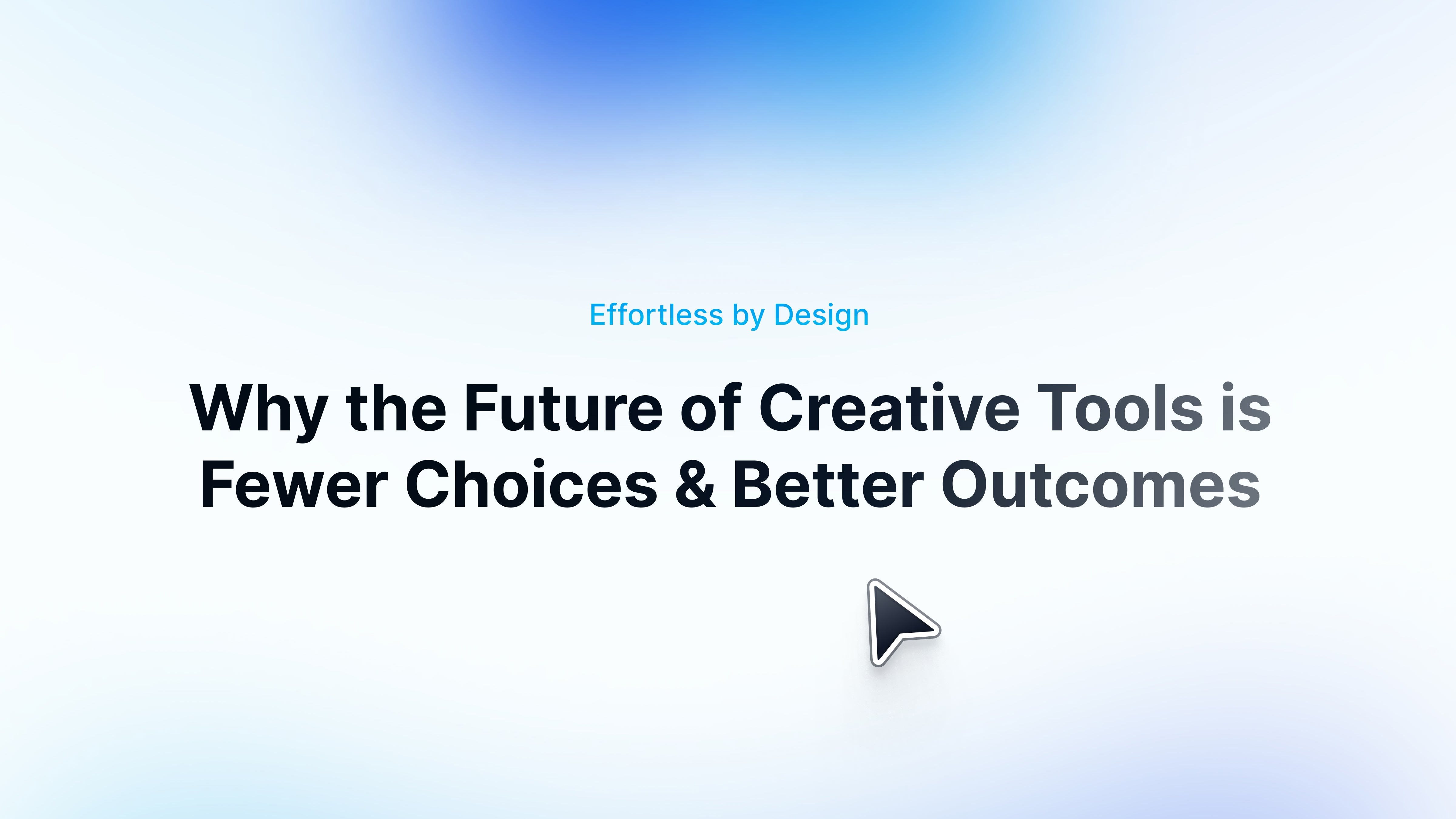TL;DR: Most product demos are designed to showcase value and accelerate deals, but outdated or fragmented demo processes often end up stalling momentum instead.
- When visibility, feedback, and version control break down, deal velocity slows and your product story loses its impact.
- Modern GTM (Go-to-Market) teams are moving beyond one-off demos to unified, scalable workflows that keep stories consistent and collaboration seamless.
- Better visibility, smoother processes, and stronger governance aren’t just operational wins. They’re what turn demos into growth drivers.
Your product demo should act as a turning point that moves a prospect from passive interest to active conviction. But as buyer expectations evolve, the attributes that make a demo effective change, too. Even the strongest GTM teams can find that outdated or fragmented demo workflows invite friction where there should be flow.
This isn’t a product issue — it’s a process issue. Here are five signs your demos might be slowing deals down instead of speeding them up, and advice for how to elevate your approach for a faster, more confident close.
1. You Don’t Know Who’s Engaging with Your Demo
You spend hours crafting the perfect walkthrough, hit “send,” and wait. Then… crickets. Did your prospect open it? Share it with colleagues? Did anyone on the dotted line-signing buying committee get a chance to watch?
This post-share silence not only stalls deal momentum, it creates uncertainty for sellers. Without visibility into who’s engaging with what, reps are left guessing how to effectively follow up. Move too soon and you risk coming off as pushy. But if you wait too long, interest cools.
In today’s buying cycles, timing is everything. Multiple stakeholders are involved, decisions are collaborative, and the smallest signal — be it a replay, a share, or a note of interest — can tell you where in the pipeline a deal really stands.
The fix: Give sellers access to engagement analytics that surface these signals in real time. When teams can see who’s interacting with their demos, for how long, and where interest spikes, they can follow up with confidence instead of relying on guesswork.
2. Product Demo Feedback Lives in Too Many Places
How many times have you had to dig through old Slack threads, email chains, or random content docs to track down cross-functional feedback on a product demo? For many GTM teams, no single source of truth exists where all feedback – broad or specific – lives for easy reference and action.
When feedback is scattered, sellers spend more time acting as project managers than deal drivers. Stakeholders contradict each other, approvals get stuck in bottlenecks, and what should be a quick alignment loop turns into a game of telephone.
This creates real process costs – and for potential customers, it often shows up as blunted storytelling or outdated demos that miss key opportunities to showcase your product’s full value and potential.
The fix: Centralize demo feedback in one workspace. When every stakeholder can review, comment, and approve in a single place, feedback becomes easier to access and address. The result is faster alignment, clearer ownership, and a smoother path to “yes.”
3. Your Demo Workflows Create Friction Instead of Flow
Demos are meant to create clarity and momentum, but for many GTM teams, they just end up creating more work. Legacy demo tools with clunky interfaces, approval processes that require multiple handoffs, or “quick fixes” that take longer to set up than the actual sales call end up stalling momentum and pulling focus away from what matters most: telling a clear, compelling, and engaging product story.
When workflows get bogged down, teams lose their rhythm. Reps spend more time navigating tools and chasing approvals than refining their message or tailoring the experience. Marketing and Solutions Engineers fall out of storytelling sync. And the creative focus that should go into crafting great demos gets redirected into managing logistics.
It’s not that the demo itself fails, it’s that the effort behind it becomes unsustainable and hard to scale, especially amid rapid change. Over time, this slows iteration, limits collaboration, and makes it harder to keep demos aligned with the product as it evolves.
The fix: Streamline the path from idea to execution. When teams can update, share, and reuse demos without jumping through hoops, they spend less time managing process and more time refining product stories that sell themselves.
4. You Lose Control After You Share Your Product Demo
Once a demo leaves your hands, where does it go? For many sellers and marketers, the honest answer is, “I have no idea.”
Links get forwarded, versions linger, and outdated content keeps circulating. Before long, there are multiple “live” demos floating around, and no one’s sure which one tells the right story.
This isn’t just a version-control problem, it’s a narrative one as well. When different stakeholders see different versions of your product, context gets lost. Someone new to the conversation might open a half-baked walkthrough or an old demo that no longer reflects current functionality, leaving your story fragmented and inconsistent.
Without guardrails, you’re left crossing your fingers and hoping the buyer sees the version you intended — effectively leaving the journey to chance.
The fix: Keep your demo content governed and up to date. Version control, expiration settings, and permissions ensure the right people see the right version at the right time, so your product story stays consistent, relevant, and in your control.
5. Your Product Story Isn’t Consistent Across Teams or Channels
Across most GTM teams, demo practices can vary wildly. One team builds custom walkthroughs from scratch, another reuses outdated assets, and a third improvises on the fly. Each demo might be well-intentioned, but together they create a fragmented product story that shifts depending on who’s telling it, when, and to whom.
Inconsistent demos are risky business, creating confusion around both the product and your brand. Buyers hear mixed messages about what the product does and how it’s evolving, undermining confidence in your brand’s credibility and trustworthiness. Meanwhile internally, teams lose visibility into what’s being shared in the field, which makes it harder to stay aligned on a single narrative or measure what’s working.
Consistency doesn’t mean sameness — it means reliability. Every demo should reflect the most current version of your product and the same core story, adapted thoughtfully for each audience and channel. That’s what builds trust, both inside and outside the company.
The fix: Create a shared library of demos that every team can access and customize with confidence. With a single source of truth for product storytelling, GTM teams stay aligned, brand narratives stay tight, and every buyer gets a consistent-yet-always-relevant experience.
The Bottom Line
Your demo is often the most important touchpoint in the sales cycle. Done right, it accelerates deals, builds buyer confidence, and keeps every part of your GTM motion aligned around a single, powerful narrative. But when executed ineffectively or haphazardly, it becomes the very thing that slows a deal down, or derails it completely.
If you recognized yourself in any of these signs, it might be time to rethink how your team approaches demos. Better visibility, tighter collaboration, smoother workflows, stronger control, and consistent governance aren’t “nice-to-haves” anymore — they’re the baseline for closing deals in today’s market.
If you’re ready to transform your demo process into a unified, scalable storytelling engine, connect with one of our in-house Arcade experts to see first-hand how leading GTM teams are already doing just that.
Frequently Asked Questions
1. Why do product demos fail to convert buyers?
Demos often fall short because the process behind them is fragmented or outdated. Without visibility into engagement, consistent storytelling, or up-to-date assets, it’s easy for demos to confuse buyers rather than convince them, which slows deals down instead of accelerating them.
2. How can I make my product demos more effective?
Start by tightening your demo workflow. Use engagement analytics to understand how prospects interact, centralize feedback to improve collaboration, and ensure your story stays consistent across every version and team.
3. What are the biggest mistakes GTM teams make with demos?
Common pitfalls include running disconnected processes, relying on outdated content, and lacking version control. These create inconsistent buyer experiences and make it harder to scale what’s working across teams.
4. How do I keep product demos consistent across sales, marketing, and enablement teams?
Build from a single source of truth. A shared demo library ensures every GTM function tells the same story — using the most current product visuals, messaging, and data — while still allowing for personalization when it matters most.
5. What tools or systems can help streamline demo workflows?
Modern solutions like Arcade simplify how teams build, share, and measure product demos. They automate version control, track engagement, and make it easy to deliver consistent, interactive product stories at scale.








